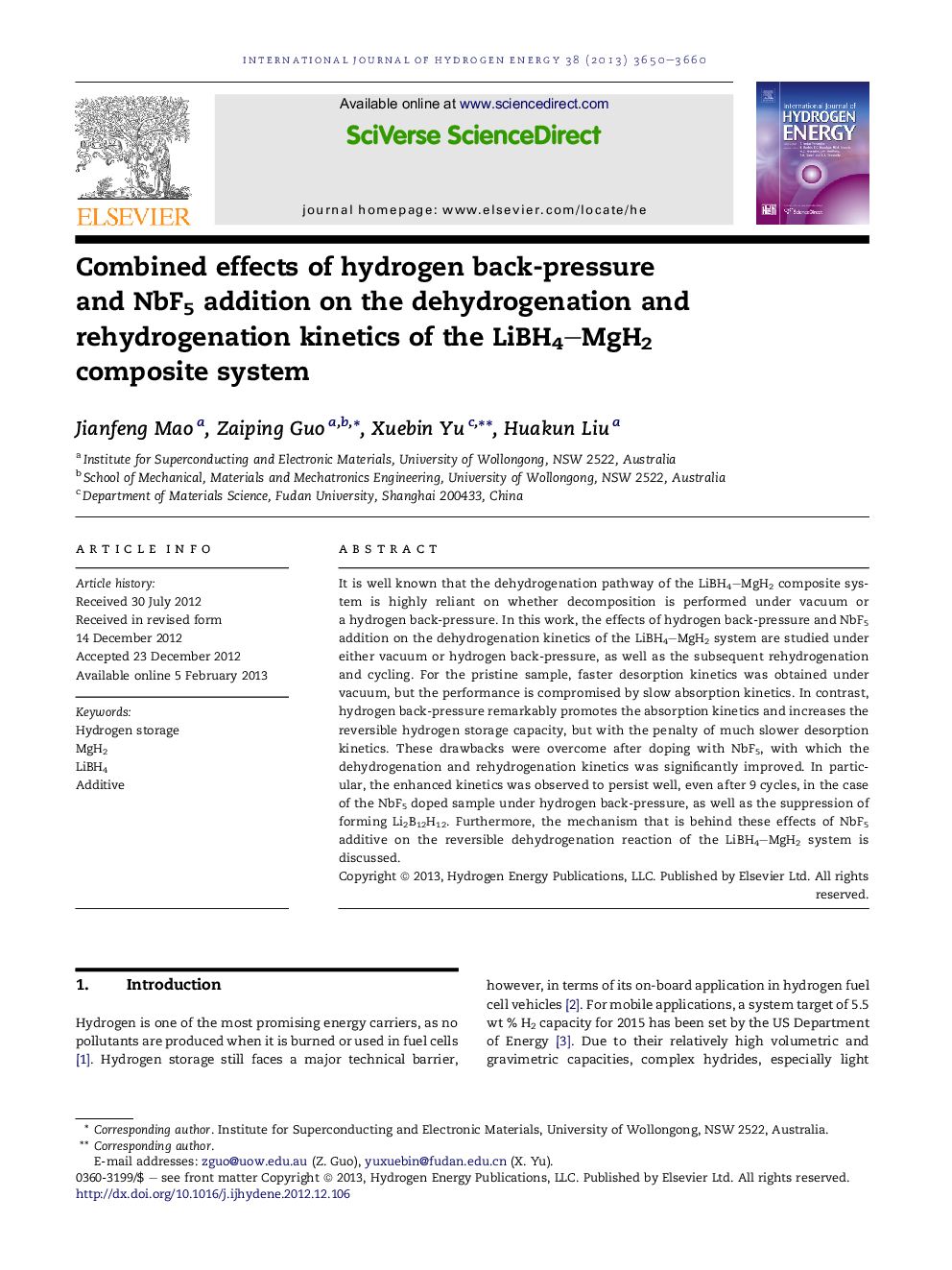| Article ID | Journal | Published Year | Pages | File Type |
|---|---|---|---|---|
| 1275582 | International Journal of Hydrogen Energy | 2013 | 11 Pages |
It is well known that the dehydrogenation pathway of the LiBH4–MgH2 composite system is highly reliant on whether decomposition is performed under vacuum or a hydrogen back-pressure. In this work, the effects of hydrogen back-pressure and NbF5 addition on the dehydrogenation kinetics of the LiBH4–MgH2 system are studied under either vacuum or hydrogen back-pressure, as well as the subsequent rehydrogenation and cycling. For the pristine sample, faster desorption kinetics was obtained under vacuum, but the performance is compromised by slow absorption kinetics. In contrast, hydrogen back-pressure remarkably promotes the absorption kinetics and increases the reversible hydrogen storage capacity, but with the penalty of much slower desorption kinetics. These drawbacks were overcome after doping with NbF5, with which the dehydrogenation and rehydrogenation kinetics was significantly improved. In particular, the enhanced kinetics was observed to persist well, even after 9 cycles, in the case of the NbF5 doped sample under hydrogen back-pressure, as well as the suppression of forming Li2B12H12. Furthermore, the mechanism that is behind these effects of NbF5 additive on the reversible dehydrogenation reaction of the LiBH4–MgH2 system is discussed.
► NbF5 as catalyst precursors. ► Catalyzing LiBH4–MgH2 with improved de/rehydrogenation kinetics and good cycling. ► Combining hydrogen back-pressure with NbF5 additive suppresses Li2B12H12 formation. ► Reduced Nb species probably act as active species.
